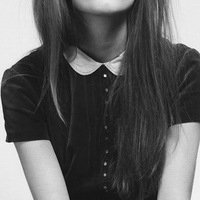
Задание 4. Заполните предложения. Свет имеет разные свойства. Он проходит сквозь тела, не
проходит. тела не пропускают свет, поэтому тела хорошо образуется пропускают свет, поэтому не образуется. 0
0
 0
0
Ответы на вопрос
 Внимание! Ответы на вопросы дают живые люди. Они могут содержать ошибочную информацию, заблуждения, а также ответы могут быть сгенерированы нейросетями. Будьте внимательны. Если вы уверены, что ответ неверный, нажмите кнопку "Пожаловаться" под ответом.
Внимание! Ответы на вопросы дают живые люди. Они могут содержать ошибочную информацию, заблуждения, а также ответы могут быть сгенерированы нейросетями. Будьте внимательны. Если вы уверены, что ответ неверный, нажмите кнопку "Пожаловаться" под ответом.

Свет имеет разные свойства. Он проходит сквозь некоторые тела, но не проходит сквозь другие тела. Оптически плотные тела, такие как металлы или дерево, не пропускают свет, поэтому за ними образуется тень. Прозрачные тела, такие как стекло или вода, пропускают свет, поэтому за ними не образуется тень.
 0
0
 0
0

Properties of Light
Light has various properties that determine how it interacts with different objects and substances. Let's fill in the sentences based on the given information:
1. Light passes through bodies - Light can pass through certain objects or substances without being blocked or absorbed. This property is known as transparency. For example, when light passes through a glass window, it is not obstructed and continues to travel through the glass.
2. Light does not pass through bodies - On the other hand, some objects or substances do not allow light to pass through them. These materials are called opaque. When light encounters an opaque object, it is either absorbed or reflected, preventing it from passing through. For instance, a wooden door does not allow light to pass through it, as it absorbs or reflects the light.
3. Bodies that allow light to pass through form shadows - When light encounters an object that partially blocks its path, it creates a shadow. Shadows are formed when light is obstructed by an opaque object, preventing it from reaching a surface behind the object. The size and shape of the shadow depend on the position and size of the object blocking the light.
4. Bodies that do not allow light to pass through do not form shadows - If an object is transparent or translucent, it allows light to pass through it, and therefore, it does not create a shadow. For example, if you hold a transparent glass in front of a light source, it will not create a shadow on the surface behind it because the light passes through the glass without obstruction.
It's important to note that the behavior of light can vary depending on the properties of the objects it encounters. Transparency, opacity, and the formation of shadows are fundamental concepts in understanding how light interacts with different materials.
I hope this explanation helps! Let me know if you have any further questions.
 0
0
 0
0
Похожие вопросы
Топ вопросов за вчера в категории Другие предметы
Последние заданные вопросы в категории Другие предметы
-
Математика
-
Литература
-
Алгебра
-
Русский язык
-
Геометрия
-
Английский язык
-
Химия
-
Физика
-
Биология
-
Другие предметы
-
История
-
Обществознание
-
Окружающий мир
-
География
-
Українська мова
-
Информатика
-
Українська література
-
Қазақ тiлi
-
Экономика
-
Музыка
-
Право
-
Беларуская мова
-
Французский язык
-
Немецкий язык
-
МХК
-
ОБЖ
-
Психология
-
Физкультура и спорт
-
Астрономия
-
Кыргыз тили
-
Оʻzbek tili
























